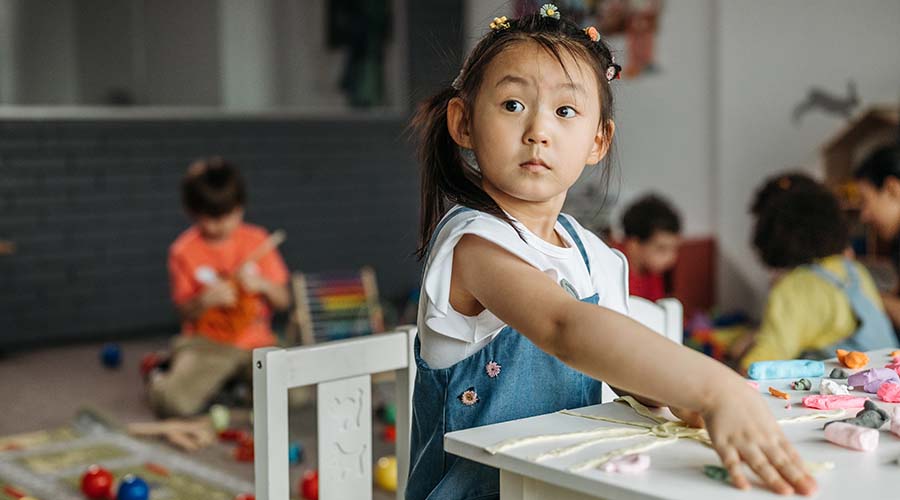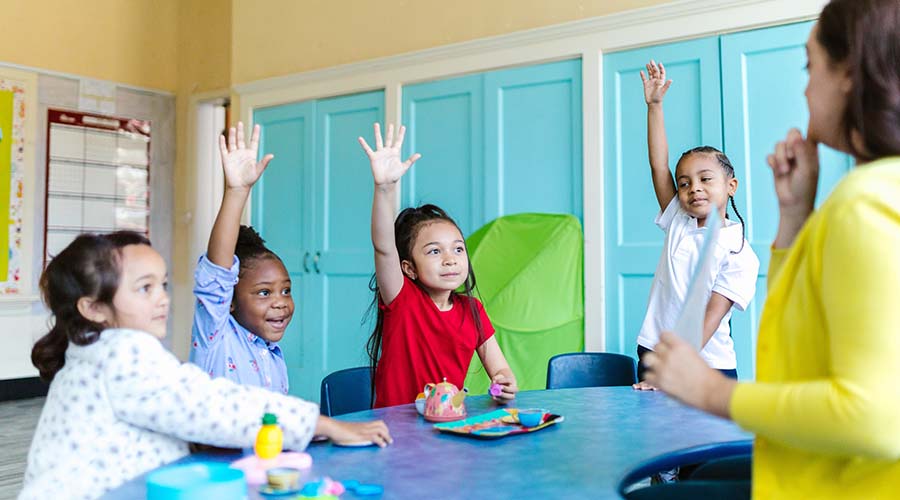settings
children
With Famly since
In our early years programs, we help children learn from mistakes all the time. But are we always as supportive of our early educators when they make a mistake?
Mistakes trigger negative emotions. We feel ashamed or embarrassed when we make them. We get mad at others when they make them. Yet, if we’re honest we find that our best learning often happens after a mistake!
Learning doesn’t come from when we are made to feel worse with harsh punishment, but rather when we get help understanding our mistakes and their consequences, and get support on how to make the necessary corrections. Then we can move on with a lighter step and sense of growth.
In this article, I want to explore how to support staff through mistakes. I believe in the parallel process: treat staff as we want them to treat children. So to look at supporting staff through mistakes and learning in early education, I’ll start with examples of what we do with children, then offer some strategies for how we work with educators.

When children make mistakes
In an early education setting, we see young children making mistakes of all sorts:
- I want to make a tall tower; but I put the larger blocks on top.
- Here is a book; I opened it upside down to read.
- I see these scissors; I’m going to cut my bangs!
Teachers and parents tend to recognize these mistakes as “teachable moments”. They show children how to right the book to read it properly, or how to build towers with a more stable foundation. Other mistakes generate a more complex response. For the cutting of the bangs, patient adults might smile but tell the child not to do it again because they could have hurt their eyes, then put the scissors out of reach.
Some mistakes prompt a sterner reaction, depending on the mess or consequences created. Then adults routinely add prevention as a strategy to avoid mistakes that have serious outcomes, so they don’t get repeated.
Mistakes provide important learning opportunities
Mistakes are errors caused by insufficient knowledge, poor reasoning, or carelessness. In the case of the book and the tower, it is easy to assume insufficient knowledge and just teach the skill. In the case of the bangs, it is poor reasoning, based on the children’s limited experience.
Early educators understand that mistakes are part of learning, so they do not deliberately accuse children of carelessness. Instead, they take the time to help the children process the situation and support them in correcting it.
As the children grow older, they are increasingly expected to “know better”, having learned from previous mistakes. And so generally a positive pattern of growth is underway.

Educators make errors too. So what do we do?
But what about mistakes in our daily work of child care and education ? Let’s consider these examples from real life.
- Harry, the substitute teacher in the pre-k classroom allows the children to climb on the shelves.
- Infant teacher Yana mixes up the new family communication app. She sends the reports to the wrong families, who get upset.
- As director Sara walks into the Teddy Bear room, she catches 18-months old Joana toddling around with a medication bottle in her hands.
As child care leaders, how do we put ‘live and learn’ in practice? How do we create a culture where we (and our team members) are able to learn and improve from mistakes? Can we use the “teachable moment” approach with our staff and colleagues as we would for children?
I’d answer definitely yes, provided we reign in our emotional response and have a plan, such as the four steps I am proposing below.
Four steps for learning from mistakes
1. Discuss and reflect
No mistake should be ignored. They must be discussed in a meeting with the educator as soon as possible. That is the opportunity for the staff person to explain what happened and for the leader to express their concern. In these conversations, it’s important to keep growth at the very core of things. If your staff member feels shamed for their mistake, they may be less receptive toward constructive learning.
2. Assess the cause
During the discussion and reflection, the cause becomes clear. It might be insufficient knowledge, poor reasoning, or carelessness. Be aware that carelessness may be tricky to differentiate from poor reasoning. Again, there’s an important difference between identifying an action as careless, and suggesting your team member is a careless person. Focusing on the action, and not the actor, can help you keep a productive, cooperative tone.
3. Identify lesson learned and correction needed
Once the cause of the mistake is established, there is still the job of identifying the lesson and finding a way to correct the situation. This must be done together with the person who made the mistake, in a “let’s fix it together” attitude. The point is for the person who made the mistake to not lose face, and be directly involved in finding a solution that works. We should seek to make resolutions, not prescribe punishments.
4. Plan prevention of future mistakes
Future mistakes cannot be eliminated altogether, but we must reasonably plan that “this” mistake will not happen again. It may require a change in skill, or in the environment, or in policies and procedures, as well as continued vigilance. What new policy, idea or agreement can help avoid this in the future?

How do we deal with these mistakes in the classroom?
To see how these four steps work in practice, let’s apply them to the three examples of educators’ mistakes we explore above.
Mistake: Allowing children to climb on shelves in Pre-K room.
Discussing and reflecting: Teacher believed it was okay, since the children have good motor skills. The director is concerned about the children learning inappropriate behavior, when the learning goal for Pre-K children is to be able to follow kindergarten classroom rules, which do not include climbing on the furniture.
Assessing the cause: Poor reasoning
Lesson learned, and correction: Climbing is good, but doing it in the classroom can be disruptive and does not teach how to behave in the classroom space. The teacher and director discuss finding other places where children can practice climbing, like playground and gym equipment.
Preventing future mistakes: The director checks in with the teacher to confirm follow-through on expectations.
Mistake: Sharing the wrong data via a family communication app.
Discussing and reflecting: The teacher thought she was using the app correctly, but her technological skills are low. The director is concerned about the teacher's skill level, and the negative effect on trust with families.
Assessing the cause: Insufficient knowledge
Lesson learned, and correction: Match the teacher with a tech savvy colleague to assist her until she has learned the skill. Communicate with the affected families to discuss the mistake, and reassure them that the program is taking measures to prevent the problem happening again.
Preventing future mistakes: Check in with the teacher to confirm comfort in skill.
Mistake: A toddler has gotten access to a medication bottle.
Discussing and reflecting: The teacher did not put medication in the locked medicine cabinet. She adds that the location of the cabinet is a problem, because it’s difficult to access for the staff. The director is concerned about medication storage procedures not followed and about the danger for children.
Assessing the cause: Carelessness
Lesson learned, and correction: The director reviews the current system for storing medications with their staff. They discuss why the accessibility can be an issue, and whether they can make the storage location in a better spot, and more secure. The team changes the location of the medicine cabinet to make it more convenient and devises a record keeping procedure to ensure safety compliance.
Preventing future mistakes: Check in with the classroom team to confirm the new location works well and monitor the compliance records.
When we make mistakes, the leaders set the tone for learning
Some mistakes are easier to address than others. Using a formula to analyze and find solutions is helpful in all cases, and seeing mistakes as teachable moments is a way to transform initial irritation or anger to a problem solving mode. The process is neither punitive nor permissive. There are consequences and corrections to be made.
Just as teachers do with children, leaders say “ Ok, that was not a good situation. Let’s see what we have learned and how we can make it better together”.
Ultimately, leaders are responsible for the well-functioning of staff, children, and families. Therefore, they are critical to the resolution as well as the prevention of future mistakes. Their strong message is that they are always available to support their staff by providing training and coaching or modifying policies and procedures to minimize and prevent mistakes from occurring. With these conditions, leaders foster a positive culture of learning for all.
The big ideas
Top tips from Reynolda Preschool
Get top tips from a preschool just like yours. Hear from Reynolda Preschool on why and how they use Famly - and why they’ve never looked back.
Read their story








%20(2).png)
